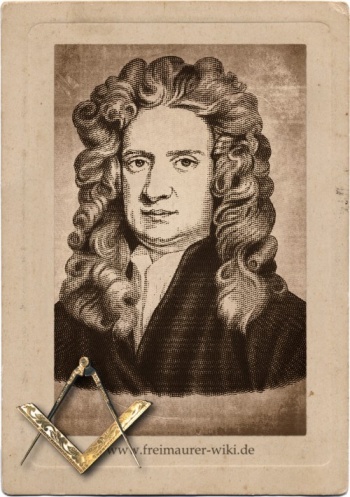En:The Alchemy of Science and Mysticism
The Alchemy of Science and Mysticism
Source: Frigyes Hausz
Alain Bauer y Ariel Godwin: Isaac Newton’s Freemasonry: The Alchemy of
Science and Mysticism (Rochester, Vermont: Inner Traditions, 2007), xii+146 pp.,
$14.95, Pbk, ISBN: 1-59477-172-3.
Newton’s Philosophiae Naturalis Principia Mathematica was undoubtedly one of the most important scientific texts in the age of Enlightenment. Newton’s philosophy exerted profound influence on the intellectual life of the eighteenth century.
As the official birth of freemasonry was almost coincident with the emergence of Newtonianism, it is not surprising that efforts were made to establish a connection between the figure of Newton and freemasonry.
Judging by its title alone, Alain Bauer’s Isaac Newton’s Freemasonry: The Alchemy of Science and Mysticism also tries to discuss the possibility of such a connection. The back cover depicts freemasonry as an indispensable element of the Enlightenment project: ‘Freemasonry […] emerged in the seventeenth century and represented something new—an amalgam of alchemy and science that allowed the creative genius of Isaac Newton and his contemporaries to flourish.’
Unfortunately, the title and the cover are somewhat misleading, as the author does not uncover a direct link between the figure of Newton and Freemasonry, and does not discuss the indirect connection in detail either.
The actual body of the text is not longer than 86 pages, which does not give much opportunity to examine an issue of such magnitude in detail, but this is not the intent here, as the book has the modest objective of drawing attention to the topic.
Bauer’s work begins with a nice summary of the different approaches to masonic historiography. The author rightfully states that the mythological, romantic view on freemasonry that mixes legend with factual data is no longer acceptable and advocates scientific criteria in the writing of masonic history. In the light of this statement it is somewhat surprising that he should claim that Robert Lomas’ views on the doubtful connection between freemasonry and the Knight Templars ‘still merit examination’ (p. 34).
It is evident that the research on the genesis of freemasonry cannot be imagined without the analysis of its intellectual environment, namely the seventeenth and eighteenth centuries. In his short book Bauer intends to present ‘the swirl of historical, sociological and religious influences that sparked the spiritual ferment and transformation of that time.’ Considering the objective of the book, it is easy to understand that the description of the social context of the seventeenth and eighteenth centuries is not really detailed. It cannot be overlooked, however, that Bauer overemphasizes the role of freemasonry in shaping the contemporary intellectual milieu.
The book, for instance, exaggerates Sir Robert Moray’s and Elias Ashmole’s importance in the establishment of the Royal Society (p. 41), and suggests that the organization borrowed rules from masonic lodges (p. 50). When discussing the possible precursors of the Society, Bauer mentions the Invisible College, the Society of Antiquarians and the Gresham College but fails to recognize the importance of Samuel Hartlib’s circle.
The author could have used Michael Hunter’s books more extensively as points of reference instead of citing popular best-sellers.
134 Journal for Research into Freemasonry and Fraternalism © Equinox Publishing Ltd 2010.
Although the book proposes to clarify the connection between Newton and Freemasonry, it does not present any substantial biographical element of Newton’s life, which could be associated with freemasonry. Bauer offers little more than a listing of the most important events of Newton’s life over three pages (pp. 53–56.).
He could have provided a more detailed account of Newton’s possible masonic affiliations by referring to his friendship with John Desaguliers—a luminary of modern freemasonry. However, this is discussed only in a few passing sentences. It is also strange that although listed in the bibliography, Bauer does not cite Margaret Jacob’s Newtonians and the English Revolution 1689–1720.
The illustration of Newton’s attitude towards Rosicrucianism is also problematic. Bauer states that the Rosicrucian philosophy had some influence on Newton’s intellectual pursuits (p. 69). Although Newton’s library contained copies of the Rosicrucian manifestos, it does not follow from this that he was sympathetic towards the movement. In his writings Newton devoted only a small passage to the group, in which he comments on the myth of Christian Rosenkreuz as the ‘history of that imposture.’
Some of the numerous appendices attached to the text are apparently irrelevant regarding the purpose of the book. For instance, there is no obvious reason to include the timeline of the development of French freemasonry. The text also contains some unfortunate spelling mistakes, for example, the seventeenth-century antiquarian William Camden, is incorrectly spelled more than once as William Cambden. Closer editing should have caught such errors.
To sum up, in spite of its exaggerations and hasty conclusions the book more or less accomplishes its main objective of directing attention to this intriguing topic. Bauer’s work leaves much room for further research.
FRIGYES HAUSZ
Frigyes Hausz is a graduate student, Department of English Studies, University of Szeged
Szeged, Egyetem u. 2, H-6722, Hungary
E-mail: frigyes.hausz@gmail.com

